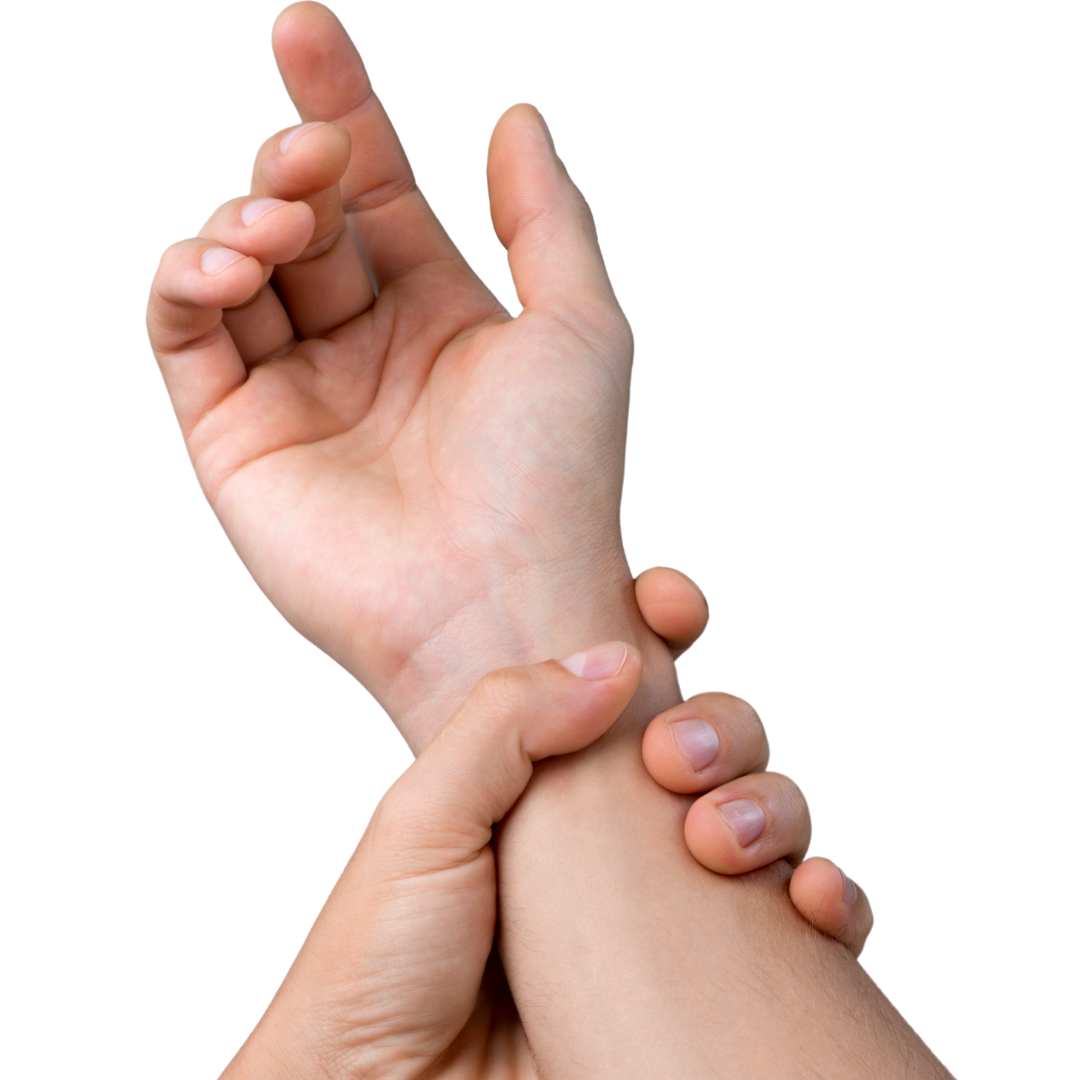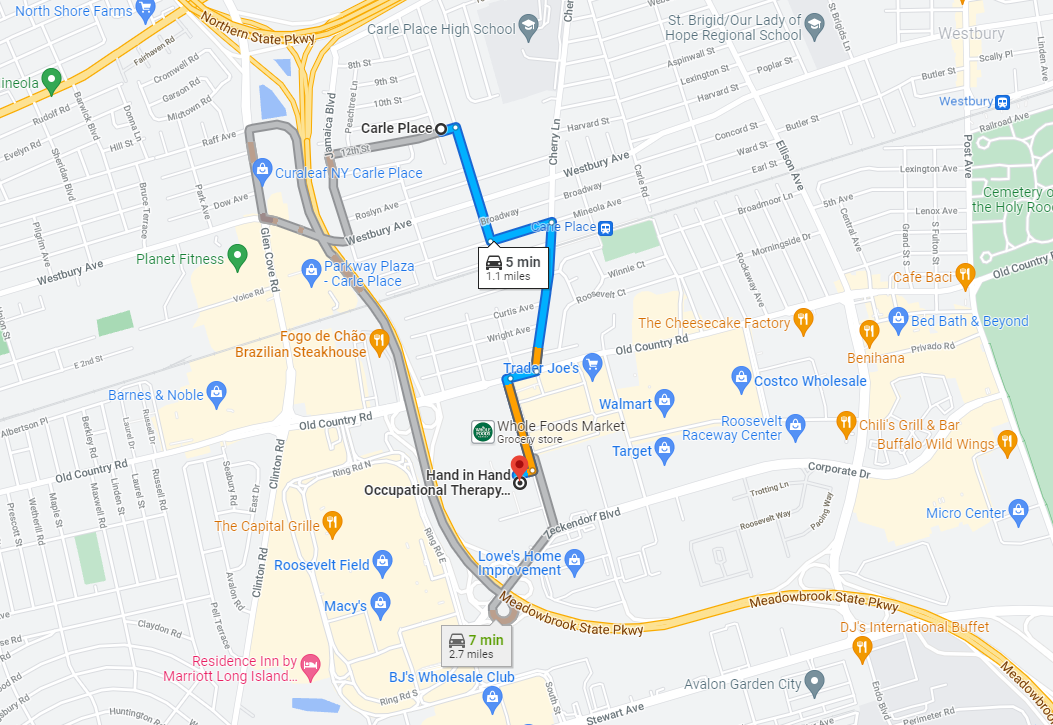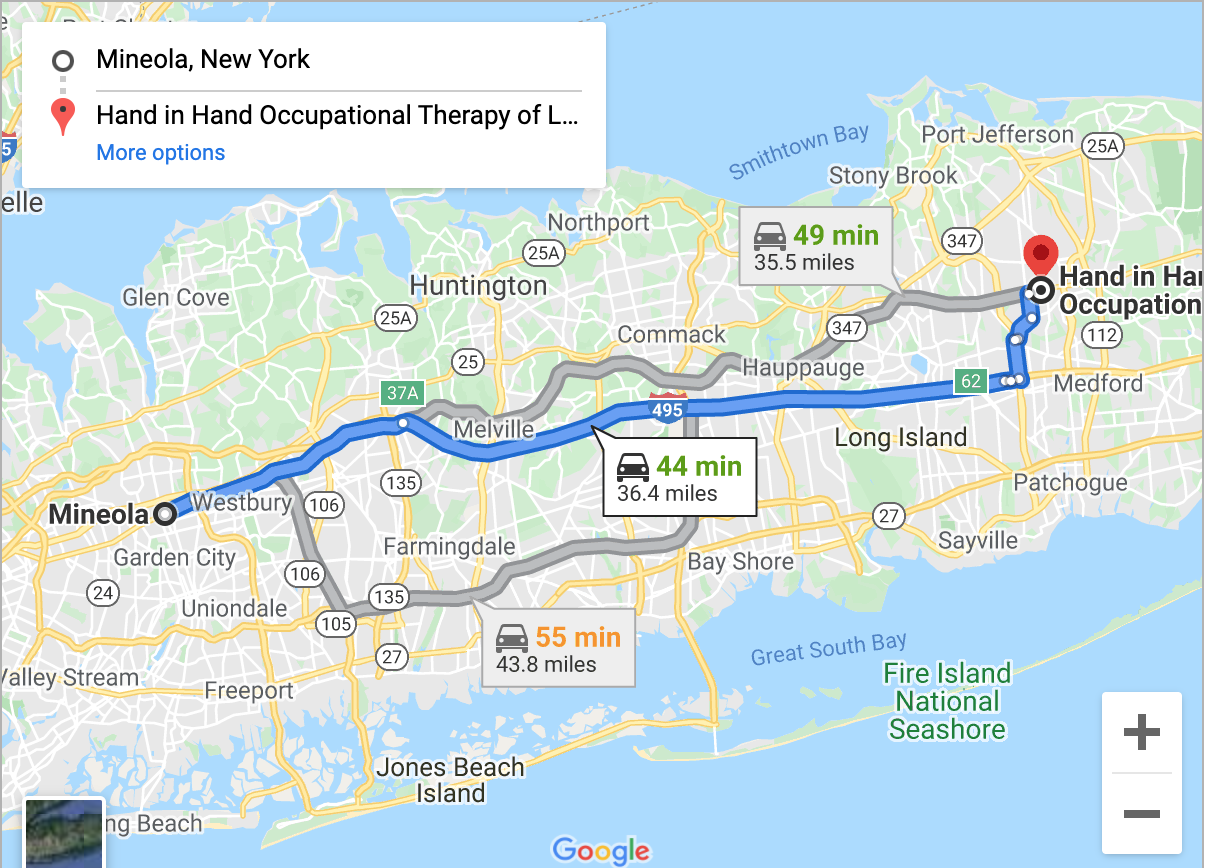Actions with your arms and wrist, such as typing in the same position for an extended period, can sometimes begin to affect the surrounding area. This leads to stiffness and weakness, which, unfortunately, is an uncomfortable feeling. At Hand in Hand Occupational Therapy, our Occupational Therapy Near Westbury will provide you with the best hand rehabilitation to restore proper function.
WHAT IS WRIST PAIN?
Wrist pain is a condition that is caused by a variety of reasons. Typically, common causes are sprain and tendonitis. However, pain often varies by type of cause. Symptoms include:
Shooting pain or ache
Inability to hold objects or use arm
Pain lasting more than a few days
Unable to flex
Swelling
Numbness or tingling
WHAT CAUSES WRIST PAIN?
Wrist pain is typically caused by conditions like a sprain or tendonitis; however, misuse and overuse play the main role. You might be playing sports or doing strenuous activities that put pressure on your wrists. Typing in the same position without mobility every so often can cause wrists and hands to become stiff. Some conditions include:
Sprain - Wrist ligaments stretching or moving past their limits. For example, falling on your hand puts a lot of pressure on your wrist. This injury causes pain and swelling with movement.
Tendonitis - Tendons suddenly become swollen and inflamed from repetitive actions such as typing or playing sports like tennis or golf. If tendons are inflamed, you might not be able to grip objects properly.
Carpal Tunnel Syndrome - A common condition that is caused by repetitive motions. This leads to inflammation and a pinched nerve. The nerve is compressed, which causes numbness and tingling.
Arthritis - Different types of arthritis can affect the wrist because of joint damage as well as wear and tear over time.
A diagnosis for wrist pain is made based on medical history, symptoms, and physical examination. Our Occupational Therapy Near Westbury will provide an X-ray exam to observe the bones, muscles, and other tissues. Depending on the suspected condition, there will be different tests given, such as the tinel test for carpal tunnel syndrome or joint aspiration for septic arthritis.
HOW DO YOU AVOID WRIST PAIN FROM TYPING?
To prevent wrist pain or further pain, our Occupational Therapy Near Westbury suggests considering self-care strategies:
You want to be as mobile as possible to keep your blood flowing.
Taking a rest from activity and stretching is important.
Clenching fists.
Building hand and wrist strength by squeezing a tennis ball firmly.
Overhead reach stretches will help blood circulation and increase flexibility.
To soothe wrist pain, here are some tips:
Rest - Rest your wrist to let the swelling go down.
Ice - Ice the area for 15 to 20 minutes.
Compression - Wrap the wrist.
Immobilization - Support braces for the wrist can help.
HAND IN HAND OCCUPATIONAL THERAPY
At Hand in Hand Occupational Therapy, our Occupational Therapy Near Westbury will provide you with the best care and proper treatment. To schedule your appointment, contact us now!
Your wrist, located in between your hand and forearm, contains several small joints. Bones, tendons, and ligaments are found at the site of your wrist and can all possibly obtain injuries. At Hand In Hand Occupational Therapy, our Occupational Therapy Near Westbury can relieve your wrist injury with multiple forms of treatments.
WHO IS AT RISK FOR WRIST INJURIES?
Anyone is at risk for a wrist injury; however, specific actions can make you more susceptible to obtaining a wrist problem. One activity that can expose you to a wrist injury is doing sports. Performing contact sports, games where your hand is outstretched, and sports where you have to hold an object increases this exposure. More specifically, the following sports can put your wrist at risk:
Skateboarding
Snowboarding
Gymnastics
Basketball
Lacrosse
Football
Another action that can put you more at risk for a wrist injury is repetitive wrist motions. Some repetitive movements that can hurt your wrist include typing on a keyboard or phone, working on an assembly line, and using tools. Having certain diseases or previous injuries can also increase your chances of getting a wrist injury. If you obtain a wrist injury and are looking for a Occupational Therapy Near Westbury, consider our team.
TYPES OF WRIST INJURIES
Some common wrist injuries that can occur include:
Carpal tunnel syndrome- The nerve that runs from the forearm to the palm is squeezed at the wrist.
Ganglion cysts- Noncancerous lumps and masses are presented in the wrist.
Gout- The buildup of uric acid in the wrist joints.
Fractures- The breakage of bones in the wrist.
Osteoarthritis- The wear and tear of the wrist joints.
Tendinitis- The inflammation of a tendon in the wrist.
TREATMENT OF WRIST INJURIES
Treatments vary depending on the type of wrist injury. Our Occupational Therapy Near Westbury can treat most wrist injuries. Some treatment methods include:
Rest
Wearing a brace
Pain relievers
Cortisone shots
Physical therapy
Surgery
CONTACT OUR OFFICE
If you have injured your wrist and require a Occupational Therapy Near Westbury, then see our specialist at Hand In Hand Occupational Therapy. We can offer you treatment and get you back to having a regularly functioning wrist again. Contact our team for an appointment.
We use our hands and our wrists every day to accomplish almost all of our daily tasks. With that being said, injuries in the wrist are quite common. If you experience pain or have an injury in your wrist, visit an occupational therapy near Westbury. Our Hand In Hand Occupational Therapy team is skilled in helping patients recover and improve so they can maintain skilled needs for working and daily living.
Common Wrist Injuries and Disorders
Carpal Tunnel Syndrome is a condition that commonly leads to numbness, weakness, and tingling in hand. A pinched nerve in the wrist causes this.
A ganglion cyst is a noncancerous lump or mass that is formed when fluid leaks from a joint.
Gout is a form of arthritis that causes severe pain and tenderness from a buildup of uric acid in the joints.
Fractures of the wrist are the technical term for a broken wrist in which one or more of the bones in the wrist are cracked or broken. It causes immediate pain, swelling, and tenderness.
Osteoarthritis is a condition that causes pain and stiffness at the wrist crease and is the most common type of arthritis. It develops over time as the cartilage in the wrist naturally wears down.
Sprains and strains are injuries to the ligaments, muscles, or tendons. A sprain often occurs when the ligaments that support are stretched and ultimately torn. This can happen when the wrist is bent or twisted. Strains are similar, except the muscles and tendons in the wrist are overstretched.
Tendinitis is the inflammation of one or more tendons in the wrist. It usually is more prevalent in individuals with repetitive injury to a tendon or overuse of a tendon.
Who Is At Risk For Wrist Injuries?
There are many different types of wrist injuries and many different ways these injuries can occur. One way your chances of injuring your risk is increased is by participating in sports. By playing certain sports, you are exerting repetitive stress on the wrists. You may also fall on your hands, causing a strain, sprain, or break. Another way of increasing your risk of injuring your wrists or developing disorders in the wrist is by making repetitive wrist motions in simple everyday activities and for example, playing video games, texting on the phone, or typing on a keyboard. Lastly, certain diseases can cause pain in the wrist, such as rheumatoid arthritis. Our occupational therapy near Westbury can provide you with treatment if you happen to get injured.
How Can I Prevent Wrist Injuries?
Using wrist guards is one way you can prevent injuries while participating in sports or any psychical activity. They support the wrist and can be useful in preventing broken bones from falling during activities such as basketball, gymnastics, or skateboarding. At work, you can avoid injury by performing stretches and taking breaks when needed. If you spend hours on a computer typing, you might want to invest in an ergonomic keyboard and use proper typing techniques. You also want to be sure that you are taking care of your bone health and are keeping your bones strong. To do this, make sure that you are getting enough calcium and vitamin D. Lastly, visit our occupational therapy near Westbury.
Contact Us
If you have suffered a wrist injury, visit our occupational therapy near Westbury at Hand In Hand Occupational Therapy. We treat several different conditions, including wrist fractures, chronic and acute injuries, tendon and ligament injuries, tendonitis, and so much more. Schedule an appointment today to treat your pain!
































